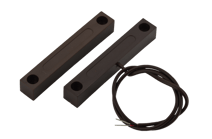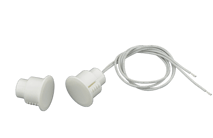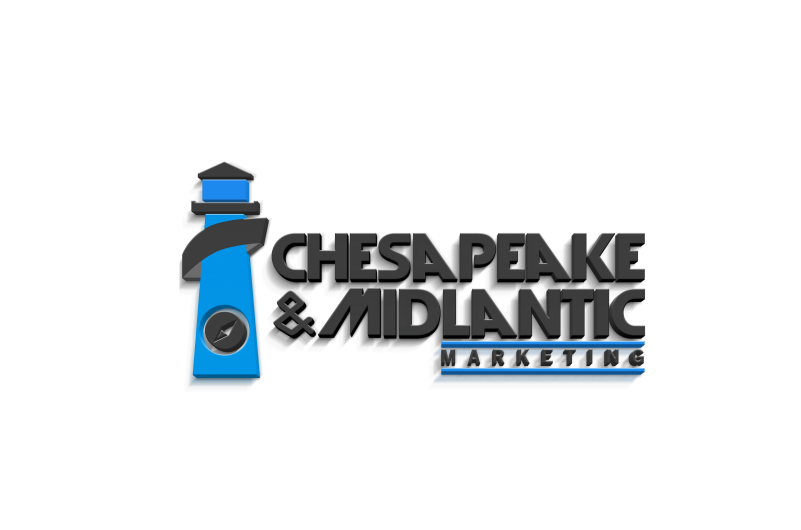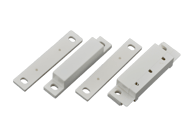
A door alarm sensor is a magnetic device which triggers an intrusion detection alarm control panel when a door is open or closed. It comes in two parts, a magnet and a switch. The magnet is secured to the door, and the switch is connected to a wire running back to the control panel.
The three most popular contacts are Bosch's ISN-CSD70-W, the ISN-CSM20-WGB, and the ISN-CSM35-WGW. In the video below, Jim Grenier and Ari Erenthal discuss the common uses, differences, and best practices >>
As the door opens, the magnet moves away from the switch, telling the alarm panel that the door is open. Once the door closes and the magnet is within one inch of the contact, the alarm panel reads the door as closed.
Best practice is to mount the contact so that the switch and the magnet are both well within the gap. Try to install the device at about half the gap, so that the switch is mounted approximately half an inch from where the magnet is when the door is closed. This helps cut down on false alarms considerably, even if the door has some play. The contact includes plastic spacers to enable ideal spacing during installation.
The Bosch ISN-CSM35-WGW is a surface mount contact with screw terminals for connecting the wire that runs back to the alarm panel. This contact has a 1" gap. That means the switch has to be within one inch of the magnet to work. The ISN-CSM35-WGW is a good option for wooden or hollow aluminum doors. Never install the switch on the door, always the magnet.
Commercial Surface Mount Contacts

A commercial-grade surface mount contact uses a more powerful magnet, so it is good for steel doors. Using a standard magnet on a steel door will gradually weaken the magnet. This causes the gap to get shorter over time and is a common cause of false alarms.
The Bosch ISN-CSM20-WGB is a heavy duty surface mount contact designed for commercial applications. It has a 2.5” gap, making it ideal for commercial exterior doors.
Press-fit Contacts Recessed contacts are a popular choice for an architecturally pleasing or custom door because it doesn’t ruin the look of the door. They are also a good choice for tightly fitted doors where there is not enough room to install a surface mount contact. Because of the way these contacts are installed, they are commonly referred to as “press-fit” contacts.
Recessed contacts are a popular choice for an architecturally pleasing or custom door because it doesn’t ruin the look of the door. They are also a good choice for tightly fitted doors where there is not enough room to install a surface mount contact. Because of the way these contacts are installed, they are commonly referred to as “press-fit” contacts.
These types of contacts are designed for solid wooden doors or hollow core steel doors. Most press-fit contacts are not ideal for steel doors, however Bosch's uniquely designed press-fit prevents the magnet from coming into direct contact with the steel of the door.
The Bosch ISN-CSD70-W is a recessed contact with a 1.5” gap. The magnet is pressed into a ¾” hole drilled into the door and the switch is pressed into a ¾” hole drilled into the frame. When installing a press-fit contact, be careful to line up the magnet with the switch.
Need advice or system design assistance? Contact us here >>








